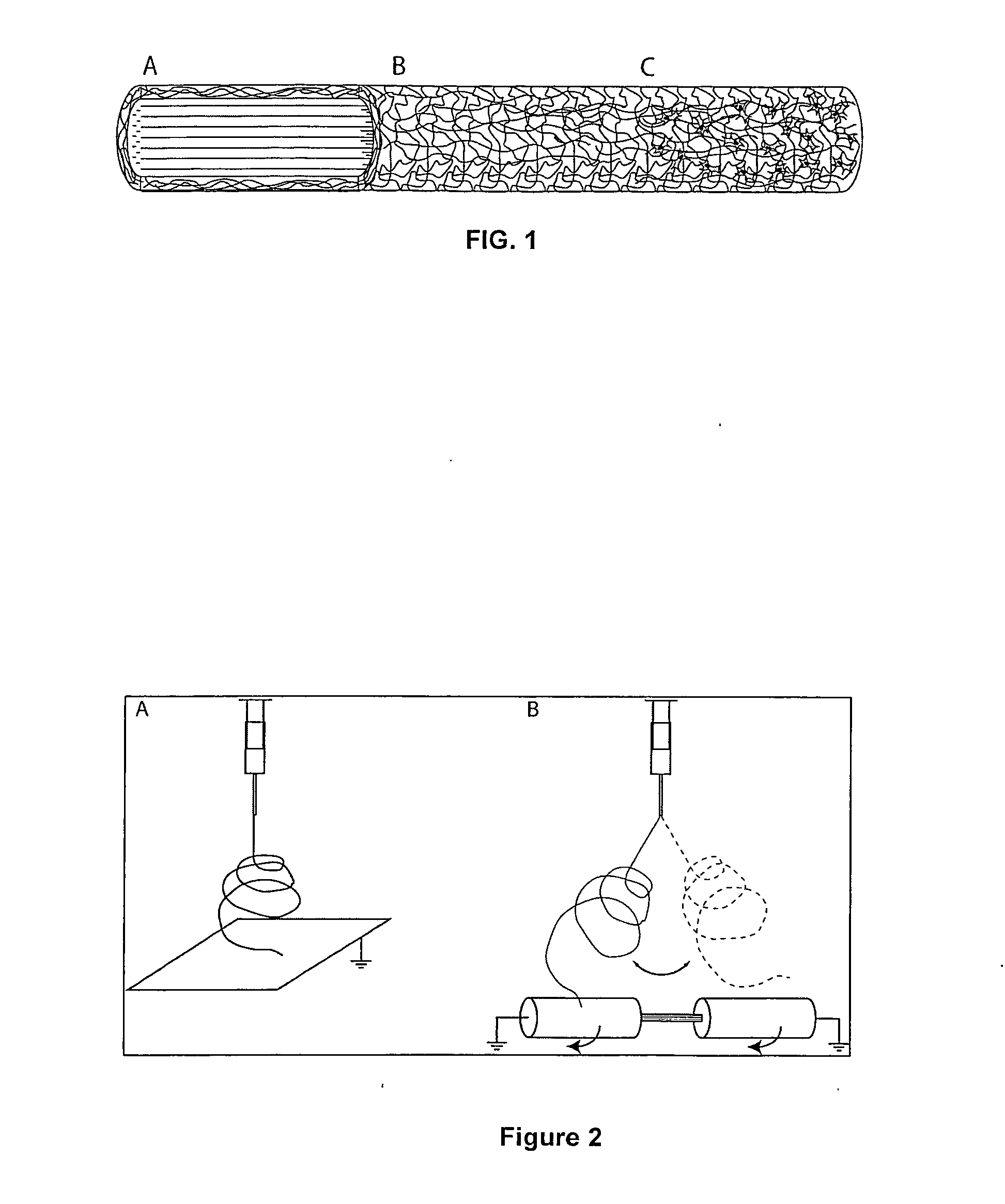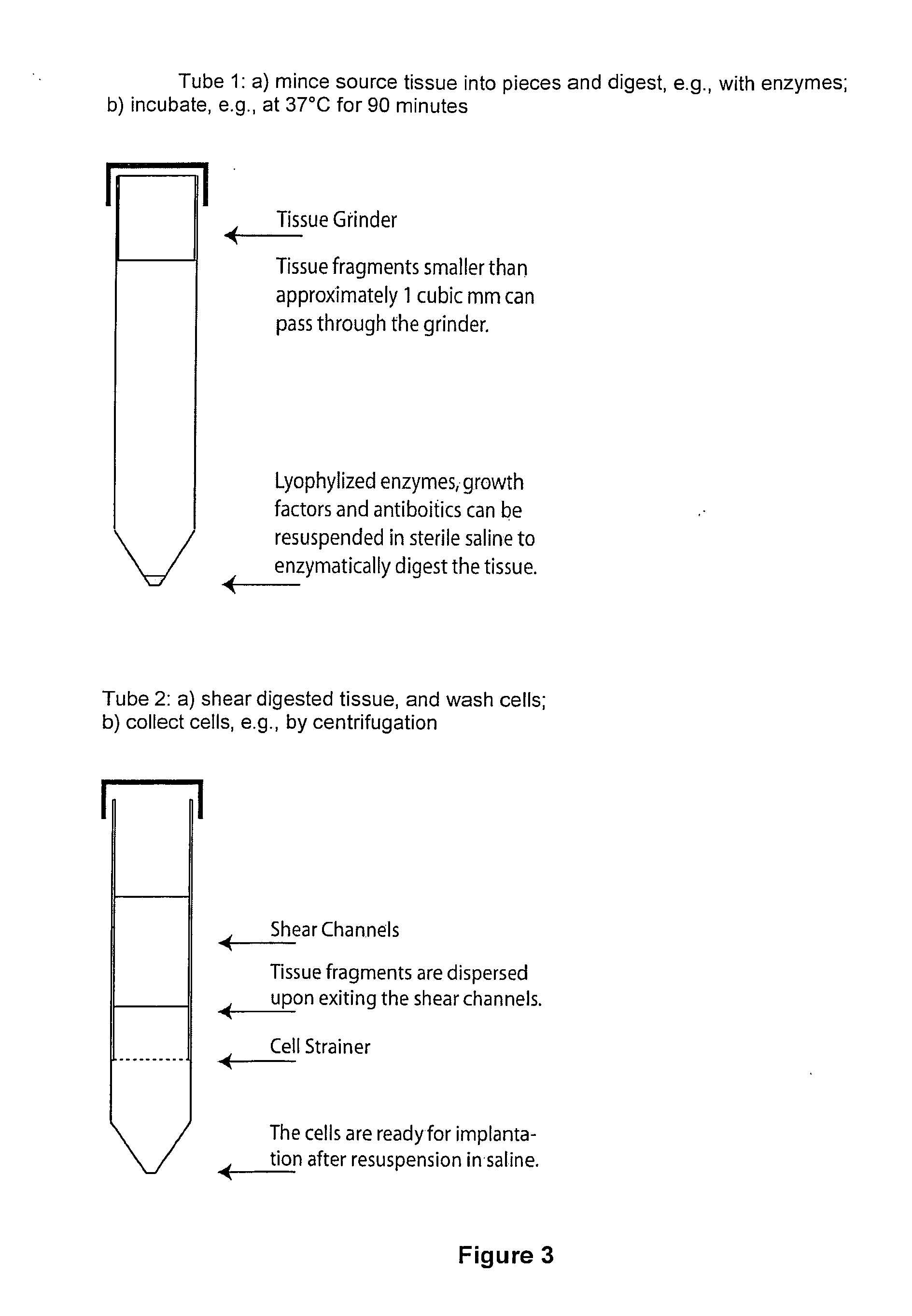Regenerative tissue grafts and methods of making same
- Summary
- Abstract
- Description
- Claims
- Application Information
AI Technical Summary
Benefits of technology
Problems solved by technology
Method used
Image
Examples
example 1
Muscle-Derived Mesenchymal Progenitor Cell Isolation
[0086]Mesenchymal Progenitor cells (MPCs) were harvested from traumatized human muscle debridements using a previously established procedure. Nesti L J, et al. Differentiation potential of multipotent progenitor cells derived from war-traumatized muscle, J. Bone Joint Surg. Am., 90, 2390-98 (2008). MSCs were obtained from human bone marrow.
[0087]With institutional review board approval from Walter Reed Army Medical Center and informed patient consent, tissue specimens were obtained from patients who had sustained traumatic extremity injury during Operation Iraqi Freedom and Operation Enduring Freedom. These patients presented to Walter Reed Army Medical Center approximately three to seven days after the injury and underwent serial debridement and irrigation procedures until the wounds were determined to be clinically acceptable for definitive orthopaedic treatment. The amount and nature of debrided tissue was surgeon dependent and ...
example 2
Differences Between MPCs and MSCs
[0090]A. Gene Expression Profile Differences (Osteogenic)
[0091]Significant differences were noted between the traumatized muscle-derived MPCs and bone marrow-derived MSCs (FIG. 4). First, the MPCs continue to proliferate while being induced to differentiate into osteoblasts. There is evidence supporting that the entire population of MPCs is slow to shift from the proliferative state to differentiation, since histological evidence of differentiation appears homogeneous throughout the MPC cultures undergoing osteogenesis. These cells also express lower levels of osteocalcin, an osteoblastic gene that is expressed during later stages of osteogenic differentiation. Second, there are differences in the osteogenic gene expression profile between the MPCs and MSCs cultured under growth conditions, which may reflect the tissue of origin for both cell types. MPCs express higher levels of COL15A1, a gene associated with muscle tissue development, and GDF10, sh...
example 3
MPC In Vitro Expression of Trophic Factors
[0100]A. Neurotrophic Factor Gene Expression
[0101]In 2-D culture, the progenitor cells derived from traumatized muscle were exposed to defined glial-induction media. Conditions to optimize the neurotrophic potential of MSCs and muscle-derived progenitor cells were determined using ELISAs to measure the concentration of secreted neurotrophic factors (i.e., BDNF: Brain Derived Neurotrophic Factor, NGF: Nerve Growth Factor, GDNF: Glial Derived Neurotrophic Factor, etc,).
[0102]The cells were capable of producing substantial amounts of neurotrophic factors, even without neuroglial induction. After 7 days in defined conditions for glial differentiation, the progenitor cells began to produce neurotrophic factors. In particular, the progenitor cells could produce substantial amounts of BDNF when cultured under optimal induction conditions. Evidence also suggests that they expressed Glial Fibullary Acid Protein, a glial cell specific marker. The amou...
PUM
 Login to View More
Login to View More Abstract
Description
Claims
Application Information
 Login to View More
Login to View More - R&D
- Intellectual Property
- Life Sciences
- Materials
- Tech Scout
- Unparalleled Data Quality
- Higher Quality Content
- 60% Fewer Hallucinations
Browse by: Latest US Patents, China's latest patents, Technical Efficacy Thesaurus, Application Domain, Technology Topic, Popular Technical Reports.
© 2025 PatSnap. All rights reserved.Legal|Privacy policy|Modern Slavery Act Transparency Statement|Sitemap|About US| Contact US: help@patsnap.com



